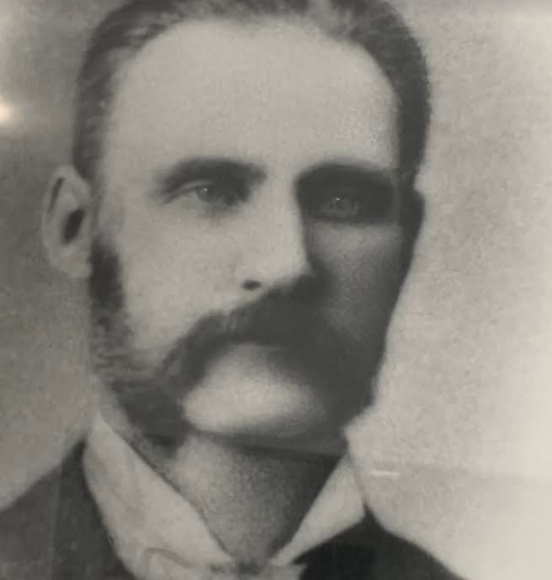Generations come and go as families move on or stay in one place, so tracking down those contributions to a community and family ties can be daunting.
But don’t tell that to Lynda Geach.
She’s had a longtime interest in her family’s ties to Barrie and Simcoe County going back to just before Confederation.
“I have been researching my husband's ancestors and have made a connection to Henry Sewrey, who opened the Barrie Foundry and Agricultural Works at the northwest corner of Ross and Bayfield streets in 1866,” she says via email from Great Britain.
“It's basically a simple story of pioneer ancestors who lived in Barrie, Shanty Bay and Rugby, where we have visited and seen the graves of Susan Brown — Henry's sister — and my husband's grandmother.”
According to Deb Exel from the Barrie Historical Archive, the elder Sewrey turned out a variety of products, including agricultural equipment, in his steam-driven factory.
“He also served as mayor of Barrie from 1882 to 1886 and closed his foundry at Ross and Bayfield streets, which stood abandoned until 1899 when it reopened as the Dyment Foundry Company,” she says.
By 1940, “all traces” of the foundry were gone at the site, which served as a gas station for years and now services motorists in a different way as a drive-thru Tim Hortons, Exel adds.
Sewrey opened a new foundry on Bradford Street in 1899.
While Geach may be living in Great Britain — Devon County in the town of Torquay in England’s west peninsula along with a view of he ocean — the love of her family’s Barrie connections is unwavering.
“We decided to visit Canada to see what we could find. The first place of interest was Rugby (on Old Barrie Road between Dalston and Orillia north of Barrie), which we drove through," she says. "And after speaking to a local historian, we could identify the farm where George Brown and Susan Sewrey lived."
Susan was Henry's sister and their parents were John Sewrey and Emily Ann Webb, who married in England and then emigrated to the Niagara area.
Along with diaries from George (Henry's first born), Geach has complied a mass of information about pioneer local life back in the day.
“Reading these diaries was a monumental effort as George had very small stylistic writing and the various accounts by (other) different diarists were all jumbled up,” she says. “Nevertheless, I was able to create various files and was able to sort it all out.
“The transcripts — on several hundred sheets of mismatched paper — were written out by George and sent to, amongst others, one of his cousins Marietta Geach (née Brown), my husband’s great-grandmother,” she says.
George recorded some musings of an election candidate in 1926, some of which follows.
“I don't think things have changed all that much after you read this list,” she says, adding it shows George’s and the candidate’s sense of humour.
"Lost 1,349 hours sleep worrying about the election; lost two front teeth and considerable hair in a 'discussion' with my opponent," the candidate states. "Donated one sow and five sheep to a relief association; gave two pair of suspenders, four dresses and $10 in cash to a bazaar; kissed 120 babies, put up four stoves, kindled 14 fires and walked over 1,000 miles; shook hands with 908 people and told over 10,000 lies through promises; attended 16 religious revival meetings; contributed $50 to foreign missions; was elected by a 353 majority, audited and found to be correct by two bigger liars than me."
George was also part of the Barrie-based Mary Street Boys, a local gang, back in the day, Geach says.
“They would get up to all kinds of mischief, including a Hallowe'en prank involving putting broom handles through the latch handles on the outside, thus preventing the doors from being opened and the occupants were thus imprisoned (amongst them at one point, his own father Henry Sewrey) town council members and the town policeman,” she says, adding there were some other tales for vegetable fodder involving this story.
“George and his pals had some frozen cabbages, which they used as missiles, hurling them at the buildings. As soon as a chair sailed out of the window, thus releasing the occupant, the boys made a swift departure and got home just in time.”
So why are all of these stories — some based on fact, others perhaps not so much, and as well as being fun — important?
“From a personal point of view, knowing how our ancestors lived — whilst being very interesting in the main — has no effect on our lives at all,” Geach says. “However, with regard to the Sewreys and Barrie I think it would not be the place it is (now) if it were not for Henry.
“He was an innovator, an inventor, a businessman and totally principled, if what I read is correct. In his business ventures he undoubtedly influenced others to innovate and build," she adds. "The equipment he developed helped numerous people from varied walks of life. The stoves, the ploughshares, the shingle cutters: they all influenced peoples’ lives."
When they began to research, "we didn't realize what an influential man he was, and getting all the card indexes (and information) from Simcoe County Archives blew us away.”



